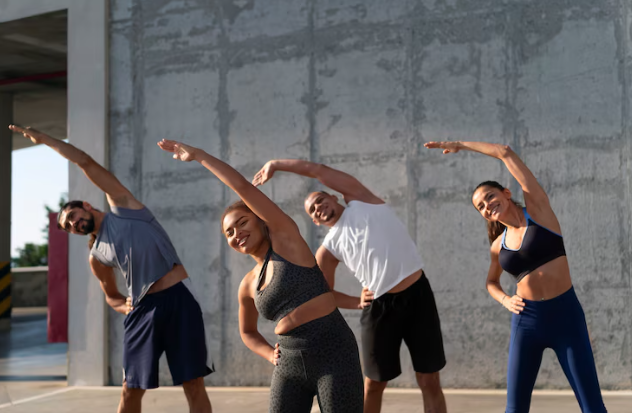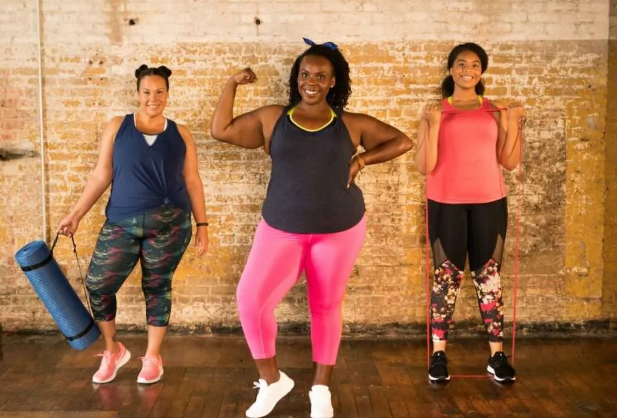Fitness motivation is one of the most important parts of living a healthy lifestyle. While starting a workout plan can feel exciting, staying consistent is where most people face challenges. Many begin with big goals such as losing weight, gaining strength, or improving endurance, but after a few weeks the excitement fades. This is normal, but it does not mean you have to give up. With the right strategies and mindset, motivation can be built and maintained in a way that keeps you on track for years to come.
At its core, motivation is about finding your “why.” Why do you want to exercise? For some, it might be improving health, reducing stress, or boosting confidence. For others, it might be about setting an example for family or preparing for a specific event. No matter your reason, connecting with your personal “why” gives meaning to every workout and makes it easier to push forward when things get difficult.

Psychologists often talk about two kinds of motivation: intrinsic and extrinsic. Intrinsic motivation is when you do something because you enjoy it. For example, you may love how you feel after a run, the rhythm of swimming, or the fun of dancing. Extrinsic motivation comes from outside rewards, such as compliments from friends, reaching a goal weight, or wearing certain clothes. Both types of motivation matter, but research shows that when people focus on intrinsic reasons, they are more likely to stick to exercise long term. This is why finding activities you genuinely enjoy is one of the most powerful steps in your fitness journey.
Setting clear goals also plays a huge role in staying motivated. Instead of vague promises like “I’ll get fit,” it helps to follow the SMART method: specific, measurable, achievable, relevant, and time-bound. For instance, “I’ll walk 10,000 steps five days a week” is a much stronger goal than “I’ll try to walk more.” Breaking down big long-term dreams into smaller short-term goals creates regular wins that keep you encouraged. It also allows you to celebrate progress along the way.
Consistency is more important than intensity. Many people burn out because they push too hard in the beginning. Instead of aiming for perfection, aim for regular effort. Even ten minutes of exercise a day builds momentum. Over time, small daily actions turn into habits, and habits are the foundation of lasting change. Creating a routine helps too. Exercising at the same time every day, whether in the morning, at lunch, or in the evening, trains your mind and body to expect movement as part of daily life.

Enjoyment is key. If fitness feels like punishment, you will struggle to keep it up. Thankfully, exercise does not have to mean lifting weights or running on a treadmill. You can try dancing, hiking, swimming, cycling, martial arts, or group fitness challenges. The more variety you include, the less likely you are to get bored. Music also helps. Listening to upbeat playlists or podcasts makes workouts feel easier and more fun. Many people find that the right song can push them through the hardest parts of a session.
Working out with others is another powerful motivator. Friends, family, or fitness groups add accountability and social enjoyment. When you know someone is expecting you, it is harder to skip a session. Communities, both online and offline, provide encouragement and allow you to share progress with people who understand your journey.
Of course, mental barriers can appear. One common challenge is the “all-or-nothing” trap. Many people think missing one workout means they’ve failed. In reality, fitness is about progress, not perfection. Missing a day does not erase your progress. What matters most is getting back on track the next day. Self-compassion is essential. Instead of feeling guilty after a setback, remind yourself that everyone struggles. Each day is a new chance to keep moving forward. Visualization also helps. Imagine yourself completing a workout, feeling strong, or reaching a goal. Professional athletes use visualization because the brain responds to mental practice almost as if it were physical practice.
When results feel slow, motivation can dip. This is where patience is required. Physical changes take time, but internal benefits like better sleep, improved mood, and increased energy begin almost immediately. Tracking these improvements in a journal can keep you encouraged. Writing down how you feel after each workout helps you see patterns of growth beyond the scale or mirror.
Life is busy, and it’s easy to put fitness aside. Instead of giving up when your schedule fills up, adjust. Shorter workouts can be just as effective. Even a 15-minute high-energy session can keep you on track. Movement throughout the day also adds up—taking stairs, walking while on calls, or stretching during breaks. The key is to avoid the mindset that you need hours at the gym for it to count.

Seasons can affect motivation. Cold winters make outdoor exercise difficult, while hot summers can drain energy. The solution is flexibility. In winter, focus on indoor workouts like yoga, bodyweight training, or indoor cycling. In summer, try early morning or evening outdoor sessions to avoid the heat. Planning ahead prevents weather from becoming an excuse.
Nutrition also plays a role in motivation. When your body feels energized, your mind feels motivated. Balanced meals with proteins, whole grains, fruits, and vegetables fuel your workouts. Hydration is equally important—dehydration can make you feel tired and unmotivated. Pre-workout snacks like bananas or oats give energy, while post-workout meals rich in protein support recovery. Eating in a way that supports activity helps your motivation stay strong.
Your environment matters too. Surround yourself with positive influences. Friends who encourage healthy habits, fitness communities, or role models can lift your spirit when motivation dips. Visual reminders help as well—placing workout clothes where you’ll see them or writing encouraging notes keeps fitness on your mind. Rewards also reinforce progress. These don’t need to be food-related; new workout gear, a massage, or a fun outing can celebrate your consistency.
Different people need different motivation strategies. Beginners benefit from focusing on habit building and patience. Busy professionals do best with short, efficient workouts they can fit into tight schedules. Students may find exercise doubles as a stress reliever, while older adults might focus on mobility and independence. Tailoring motivation strategies to your stage of life ensures fitness feels relevant and sustainable.
Stories of others can also inspire you. From parents balancing family and workouts, to seniors building strength later in life, real-world examples show that fitness is possible for everyone. Following role models—whether athletes, trainers, or everyday people—reminds us that persistence pays off.
To keep motivation alive, practical strategies help. Lay out workout clothes the night before. Keep a motivational journal. Change up workouts to prevent boredom. Focus on daily benefits like improved energy, better mood, and increased strength. Most importantly, remind yourself regularly why you started.
In the end, fitness motivation is not about quick bursts of energy. It is about creating a lifestyle you enjoy. By setting meaningful goals, focusing on habits, finding fun in activity, and surrounding yourself with supportive influences, you can stay motivated for the long run. Every step counts. Even the smallest workout today brings you closer to a healthier, stronger, and more confident future.






